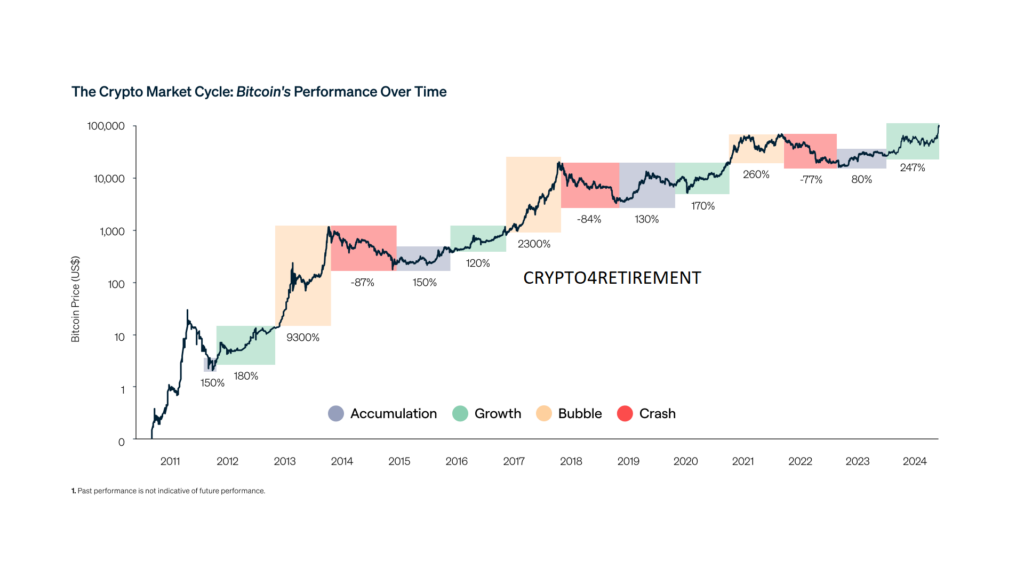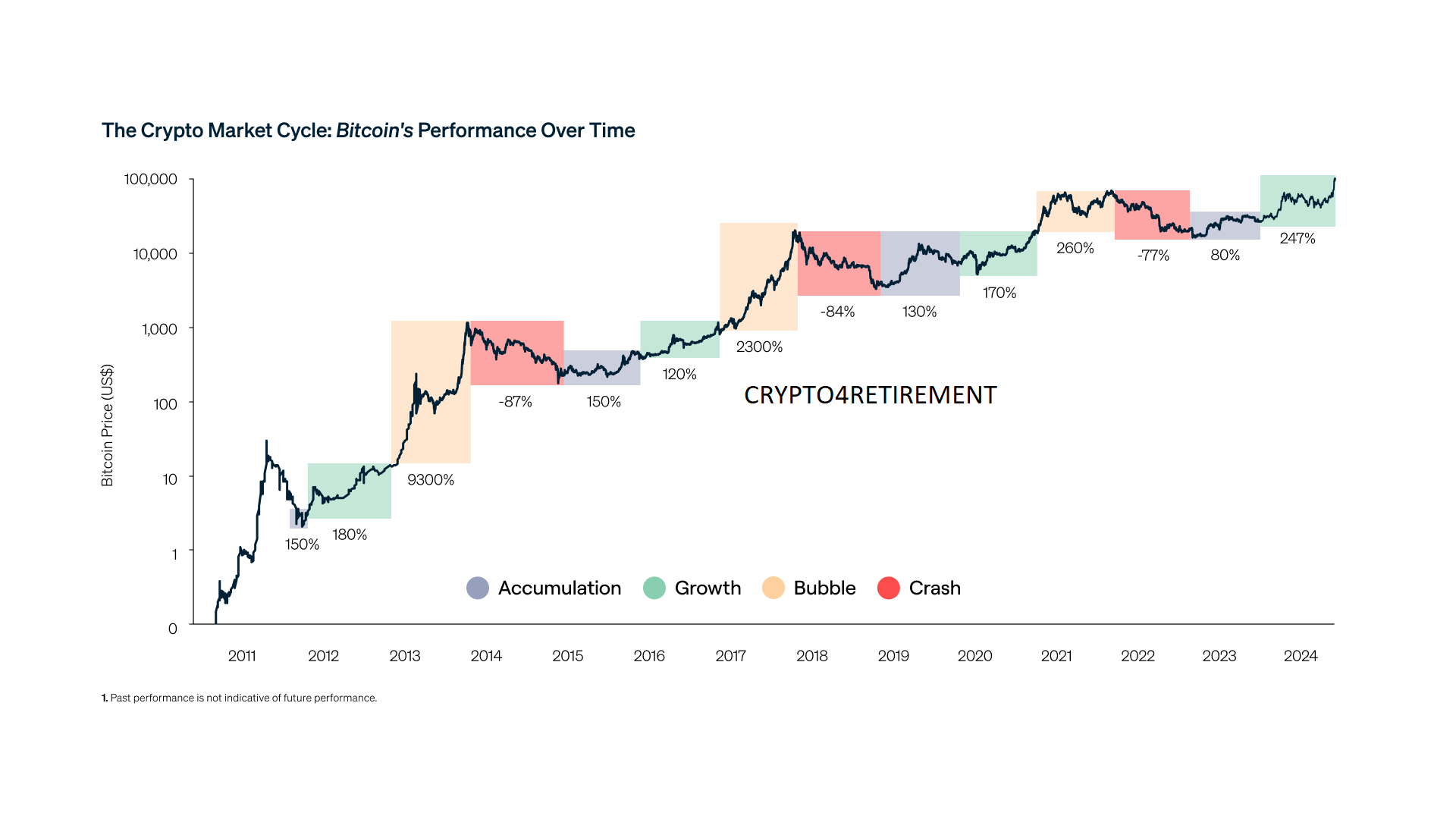The cryptocurrency market is known for its volatility and rapid shifts, leaving investors wondering: how long do these crypto cycles last, and what do they mean for your portfolio? Understanding crypto cycles can give you a powerful edge in navigating this unpredictable yet rewarding market.

Understanding Crypto Cycles
What Are Crypto Cycles?
Crypto cycles refer to the recurring patterns of market behavior that cryptocurrencies undergo. These cycles typically include periods of growth, stagnation, and decline, driven by market sentiment, innovation, and external factors like regulation. Just like traditional market cycles, crypto cycles help investors identify when to enter or exit the market.
At their core, crypto cycles are a mix of psychology and technology. As investors gain confidence, the market often experiences exponential growth, followed by a reality check when prices fall back to sustainable levels.
The Four Phases of a Crypto Cycle
Crypto cycles can be broken into four distinct phases, each offering unique opportunities and challenges.
1. Accumulation Phase
This phase occurs after a significant market decline when prices stabilize at a lower level. Savvy investors start accumulating assets, anticipating future growth. The sentiment during this phase is cautious optimism.
2. Expansion Phase
As market confidence grows, prices begin to rise steadily. Increased participation from retail and institutional investors often fuels this growth. Indicators like rising trading volumes and news of adoption mark this phase.
3. Mania Phase
The mania phase is where the market reaches a fever pitch. Prices skyrocket due to FOMO (Fear of Missing Out), and speculative investments dominate. However, this phase is often short-lived as unsustainable valuations lead to corrections.
4. Correction Phase
Following the mania, the market corrects itself, leading to sharp declines in prices. This phase can be harsh but is necessary for the market to reset before entering a new cycle.
Historical Perspective on Crypto Cycles
Bitcoin as the Benchmark
Bitcoin, the first and most prominent cryptocurrency, serves as the benchmark for analyzing crypto cycles. Its price movements often set the tone for the entire crypto market, influencing altcoins and related assets.
Major Historical Crypto Cycles
The 2013 Bull Run
Bitcoin surged from under $100 to over $1,000 in 2013, marking its first significant bull run. However, this was followed by a prolonged bear market.
The 2017 Boom and Bust
Bitcoin’s meteoric rise to nearly $20,000 in late 2017 was fueled by massive retail participation. The subsequent crash wiped out over 80% of its value.
The 2021 Bull Run
Bitcoin reached an all-time high of $69,000 in 2021, driven by institutional adoption and widespread interest. However, regulatory concerns and market corrections followed.

Factors Influencing Crypto Cycles
Market Sentiment and Hype
Public perception and hype play a huge role in driving crypto cycles. Social media trends, news coverage, and influencer endorsements can cause rapid price fluctuations.
Institutional Adoption
When institutions like Tesla or MicroStrategy invest in Bitcoin, it triggers widespread confidence, often sparking bull markets.
Regulatory Changes
Regulations can either boost confidence or create uncertainty in the market. For example, China’s crackdown on crypto mining significantly impacted the market in 2021.
Technological Innovations
Advancements in blockchain technology, such as Ethereum’s transition to proof-of-stake, can shift market dynamics and create new cycles.
How Long Is a Typical Crypto Cycle?
The Role of Bitcoin Halving Events
Bitcoin halving events, which occur approximately every four years, are a significant factor in determining crypto cycle lengths. These events reduce Bitcoin’s mining rewards, creating scarcity and often leading to price increases.
Average Duration of Crypto Cycles
Historically, crypto cycles last around 3-4 years, with distinct bull and bear periods. The timing aligns closely with Bitcoin halving events.
Comparison to Traditional Market Cycles
Crypto cycles are shorter and more volatile compared to traditional stock market cycles, which typically span 7-10 years. This rapid pace reflects the nascent and speculative nature of the crypto market.
Implications of Crypto Cycles for Investors
Identifying Opportunities in Each Phase
Understanding where the market stands in the cycle can help you strategize. For example, the accumulation phase is ideal for long-term investments, while the mania phase requires caution.
Risk Management Strategies
Diversifying your portfolio and setting stop-loss orders are crucial for navigating volatile cycles. Avoid putting all your eggs in one basket, especially during speculative phases.
Timing the Market vs. Long-Term Holding
While timing the market is challenging, long-term holding strategies, especially for assets like Bitcoin, have historically yielded better returns.


